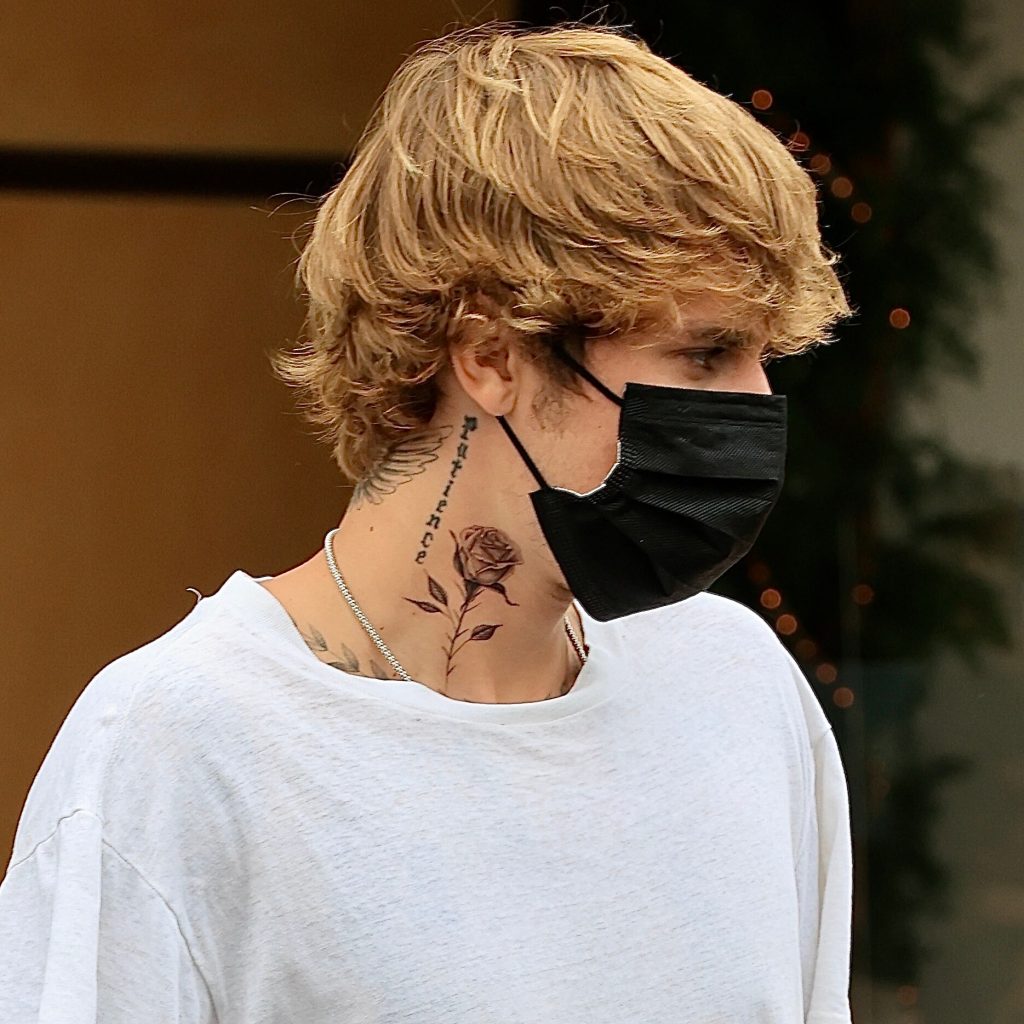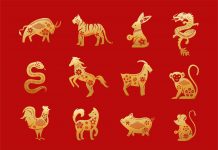Tattoos have a history that is as beautiful as it is complex. Body art can sometimes be passed off as just a “passing trend” or something that teens do just to annoy their parents, but tattoos actually have an incredibly rich past, with roots in many different cultures. Whether you are a body modification fan living in London, Tokyo, or Phuket, there will be one area of tattoo history that will apply to your local culture.
There are tons of different tattoo styles and techniques that are worth knowing if you are into tattoos. Some styles are related to religion and spirituality, like the Sak Yant tattoos in Thailand, which are traditionally done by Buddhist monks in temples. There are also styles that are deeply linked to family or personal identity, such as Polynesian tribal tattoos.
In this article, we’ll be going over the main pieces of history that you need to be aware of if you’re interested in tattoos at all. This isn’t a comprehensive history of course, but it is a summary of some of the most intriguing and beautiful parts of the history.
Table of Contents
The beginning of tattoo

The first tattooed man known to date is called Ötzi. It was discovered in the Italian Alps in 1991. It is believed to have been born over 5,300 years ago. Scientists determined that his tattoos had a healing purpose since they were mostly located on the joints. They were most likely intended to treat osteoarthritis.
In those ancient times, tattooing was more a synonym of identity or protection. It was reserved for important people like tribal chiefs or kings. But, it was also very quickly used to mark slaves as in Rome where criminals and gladiators were tattooed.
After having almost disappeared, the tattoo returns around the 18th century, at the time of the great discoveries. Explorers and sailors rediscover the Polynesian ornament, the “ tatau ” which gave its name to our modern tattoo. They will then grab it and tattoo themselves during their long hours of crossing. Among sailors, the tattoo represents a story, a lived adventure, a person met.
Ötzi the ice man
One of the most important things to know about any historical subject is the origin of the whole subject. In the case of tattoos, one of the main points of origin that historians cite is Ötzi the Ice Man.
Ötzi is the first man recorded to be a heavily tattooed mummy that has been found. He was found in 1991, between the Austrian and Italian borders, and is believed to have lived between 3400 and 3100 BC. He is an important person to know because he proves that tattooing has been around for a very long time.
Ötzi was found with 61 individual tattoos, which is a significant amount. They are all very minimalist, black in color (as if they were made with soot) and are placed in different places around his body. The discovery of his tattoos sparked much debate among historians, who disagreed about the meaning or purpose of his tattoos. The general consensus is that they were intended for pain relief, much like acupuncture, as the areas of her body that were heavily tattooed all exhibited some form of bone degeneration.
Egypt
Another important passage in the history of tattooing relates to ancient Egypt. The discovery of tattoos and tattoo tools had a huge impact on modern tattoo culture, in terms of popular designs and general knowledge.
One key scenario related to ancient Egyptian tattoos is the discovery of the Deir el-Medina mummy. This mummy was covered in beautifully ornate tattoos, ranging from’ wadjet eyes’ and lotus flowers, to religious imagery like cows with sacred ornaments. The tattoos on this particular mummy were indicative of her status- it’s believed that she was a high priestess of the goddess Hathor, due to the imagery that was used.
There were countless other scenarios relating to tattoos in Egypt. Interestingly, Egyptian tattooing appeared to be an almost exclusively female practice, based on the artifacts and mummies that have been found. One of the most popular tattoos for women was a network of dots placed on the abdomen: this stretched with the woman’s body during pregnancy, and is believed to give protective energy to the mother and to the child. In general, geometric and simple line tattoos were very common
Further evidence of tattooing in ancient Egypt comes from numerous artefacts that have been recovered from tombs and sarcophaguses. Figurines were found in tombs from 4000 – 3500 BC that depicted women with tattoos, and there were also female figures in tomb paintings that showed off body art. Many bronze implements were also discovered at the town site of Gurob, which were later determined to be tattoo tools.
Celtes
Celtic art is another very important area in tattoo history to consider. The Celts were a group of scheming people, who spread their culture by word of mouth rather than writing it down. Thus, much of their history is unknown before their interaction with other cultures such as ancient Greece or Rome.
Celtic art is very beautiful. They work with lots of intricate spiral and knot designs, and also use lots of natural symbols like animals and flowers. The intertwined knots represent the intertwined natures of the physical and spiritual worlds, and the endless paths can represent the immortality of love and faith.
The tracery in paint and tattoos originated in the UK, but Celtic missionaries ensured that the style spread to Europe as well. Subsequently, the Viking raiders appropriated many styles of Celtic art to harmonize them with their own styles, which gave birth to the hybrid styles we know today. When Christians first arrived in the Celtic parts of the UK, the monks loved their art so much that they also made part of it their own. This is where the famous tree of life and Celtic cross symbols were born.
China
Another very important part of tattoo history is Chinese tattoos. It is important to note that tattoos have not always been as well received in Chinese culture as in other cultures, for example ancient Egypt. Throughout history, many people in China have viewed tattoos as defamation of the body and an assault on a person’s morals.
Much of the knowledge about the art of Chinese tattooing originally comes from popular literature. A good example of this is La Marge d’eau, a famous novel that deals with 12th century bandits. A key reference to tattooing is made here in this book, where it is said that the infamous bandit Song Jian and his 108 companions were covered from head to toe in elaborate tattoos.
Nowadays, the attitude towards tattoos is generally more positive and accepted in China, but there is still a prejudice against people with tattoos. This is because Mao Zedong banned them during the Cultural Revolution, calling them “manifestations of impurity and cunning”. The Chinese military has always banned tattoos, and many companies refuse to give tattooed people work.
Japan

Arguably one of the most popular and lively fields in tattoo history, Japanese tattooing is still highly regarded today. Japanese tattoos are incredibly beautiful – they are either brightly colored or drawn in soft shades of black and gray.
Much of the original Japanese tattoo history is similar to the tattoo history of ancient Egypt. Figurines, icons and masks with ornate tattoo designs and paintings have all been recovered from graves dating back to at least 5,000 BC. The first time they were mentioned in literature, it was in a historical compilation of the Chinese dynasty; it was a common fact. However, this practice was not much appreciated by the Chinese, who considered tattooing to be a barbaric practice.
It is interesting to note that this prejudice against tattoos has taken hold in Japanese culture over time, as they have adopted many Chinese traditions. In the 7th century, tattoos were used as a punishment to mark and identify criminals.
Fortunately, by the end of the 17th century, this penal practice almost completely disappeared, and by the 18th century, the beautiful pictorial style of Japanese tattoos really flourished. This new interest in tattoos came with the evolution of pop culture. The invention of printing on wood was one of the major advances in this field. In addition, a Chinese novel titled Suikoden drew even more attention to tattooing. It featured many tattooed heroes, and Japanese illustrators produced their own version of the story.
England

England in the 18th and 19th centuries is a particularly important example of tattoo history. 18th century English tattoos were basically tattoos of sailors to commemorate their travels and exploits. By the mid-18th century, there was a busy tattoo parlor in almost every English port.
Interestingly, it was the upper class / royalty that popularized the tattoo. In 1862, the Prince of Wales visited Jerusalem and had a holy cross tattooed. Many upper class citizens followed suit and it quickly became a fashionable practice as a wealthy person.
In the 19th century, the trend of tattoos completely reversed and tattooing became much more associated with monster shows and side show attractions. Heavily tattooed men and women were very popular attractions, as they often had very bizarre stories of kidnapping by so-called savages and forced tattooing. For tattoo artists, monster shows and circuses were a great source of clientele and exposure.
The democratization of tattoo
The art of tattooing is therefore not a modern art but indeed an ancestral know-how! The first tattoo parlors opened in Europe at the end of the 1900s. The first electric machine, created by Samuel O’Reilly in New York already existed since 1891. The practice began to really democratize in the 70s with the punk generations and bikers. Today, 1 in 10 people are tattooed and they are no longer considered marginal.
The meaning of tattoos
The meaning of tattoos has therefore evolved very strongly over the centuries. It first had healing virtues, it represented belonging to a group or a protective mark. It was then used to mark prisoners and socially marginalized people so that they could be identified more quickly. It can also tell a story, a moment of life as on sailors or Russian prisoners. It was also a sign of rebellion and protest.
Today a tattoo can be chosen for its meaning. It can always represent the belonging to a group or the protective virtues like the “ Sak Yant ” carried out in a traditional way by the initiated Buddhist monks. But it can also be purely aesthetic as well. Currently many tattoo artists are chosen for their unique styles and creations!
Purpose

Originally, these marks on the skin were signs of belonging to a group: tribal, religious, pirates, former prisoners or legionaries. But it was also a way of indelibly marking certain categories of people such as slaves or prisoners. But the reasons why people choose to be tattooed are diverse: group identification, cosmetics, religious ritual, example of disability theory, and magical uses are the most common. Also, the sociology of the body considers them to be an important object of study.
In the 1970s, then more particularly in the 1990s, a real craze for tattooing was born. The tattoo is no longer a way of displaying one’s belonging to a group, a tribe or a neighborhood, it is a way of claiming one’s originality, of seducing, of embellishing oneself, of provoking, of compensating. Some teens live it as a rite of passage and sometimes act on impulse that they regret later. A tattoo often corresponds to an important moment in life, pleasant or painful: birth, death, personal or professional success are recurring examples of reasons that lead to getting a tattoo. Therefore, the motif but also the place of the inscription (back, torso, arms, legs, private parts, etc.) also has an important meaning.
Modern tattooing also has a dimension relating to identity discourse. Since Identity must necessarily belong to an embodied living entity, then the conceptualization of the self extends to the body. Several surveys show that all or almost all of the participants questioned about the reasons for their tattoos made reference to their identity, at one time or another. The tattoo could act as an autobiographical documentary, an externalization of identity or a display of unresolved intrapersonal conflicts. A common point sometimes denoted between all the tattooed stories is their role of agency.
The different types of tattoos
Temporary and semi-permanent tattoos are done in a variety of ways. They are drawn, glued or painted on the surface of the skin in the majority of cases, except for the semi-permanent tattoo which is carried out in a similar way to the permanent tattoo. This practice is not always well accepted by the tattoo community, because of the contradiction between the permanent character of the “real” tattoo and the more ephemeral nature of the temporary tattoo.
Henna tattoos

Henna tattoos are done with traditional henna or natural henna, not black henna which is very dangerous for the skin. The traditional use practiced in the Maghreb countries is named henna; in India and Pakistan it is referred to as mehndī. Only the leaves of henna are used for all forms of tattoos: The leaves are first gathered like tea leaves and then ground to form a powder recognizable among all with its brownish green color leaning very slightly towards gray.
Sticker tattoos

Originally, sticker or decal tattoos were advertising motifs offered in packets of chewing gum or candy. They can be easily removed with water or by rubbing them off and are rarely of good quality. The quality of these tattoos has improved over the years, allowing for ever finer and more detailed designs. Currently, they are distributed in many cosmetic stores and salons and serve as accessories a bit like a piece of jewelry. Since 2010, Chanel has even offered for sale a temporary tattoo kit, called “Les Trompe-l’Œil de Chanel”, designed for their spring-summer 2010 fashion show in Paris. In addition, singer Beyoncé posed for her ready-to-wear line in fall 2010 with numerous temporary tattoos created by the Temptu company.
Permanent makeup

The permanent makeup is a cosmetic tattoo says “indelible.” Pigments actually deteriorate after a few months or years. The process is the same as for the classic tattoo, that is to say an injection of pigments under the epidermis. It is generally carried out to mark the circumference of the eyes or the lips in order to facilitate makeup, or to redraw the eyebrows.
It is not recommended to use permanent pigments because with old age, the eyebrows, eyes, mouth become deformed and slide down. At this point, makeup should usually be done differently to mask the slippage. With permanent makeup, these techniques are limited. Moreover, during facelifts or eyelid repairs, these makeup features are very often deformed and become unsightly.
In addition, during tattoo removal, the laser cannot effectively access the contour of the eyeliner which is located too close to the eye. The tattoo of the lips is also very difficult to erase.
Semi-permanent tattoos

The semi-permanent tattoo is performed like traditional tattoos but the ink is inserted only into the epidermis and is naturally eliminated with the renewal of the skin. In addition, so-called “biodegradable” inks can be used in order to facilitate the removal of pigments. This type of tattoo fades after at least three to five years. In some cases, it may take much longer to disappear, or even remain partially indelible. Few scientific studies have been done on this subject but it appears on many sites and forums that this kind of tattoos can leave permanent marks and scars. It is therefore advisable to check with a dermatologist before making such a choice.
Erasure methods

There are two fairly effective means of removing a tattoo: either to have it covered with a new tattoo, or to have it removed with a laser by a dermatologist with the appropriate equipment. In both cases, the consequences or sequelae can be significant and the cost of the procedure is often much higher than that of the original tattoo.
The covering necessarily involves the enlargement of the tattooed area and the renewed pigments will be more visible than an old tattoo, which may, over time, fade under the action of regular exposure to the sun or abrasions of the epidermis. However, recovery is not always possible, especially in the case of tribal style tattoos. The black lines in this type of tattoo are very difficult, if not impossible, to cover up and the only solution is to use the existing strokes to create a new pattern.
The laser tattoo removal involves removing the tattoo with a laser that projects a powerful light for a very short time causing the thermomechanical effect that shatters the colored grains. This type of treatment requires adequate training, failing which it is possible to irreversibly damage the skin by creating scars. Laser tattoo removal is the only method that can actually erase a tattoo, but it is a time-consuming, painful, and expensive technique. Sometimes the result is incomplete. In France, the legislation reserves the use of medical lasers to doctors trained in lasers, morphologists and anti-aging doctors, dermatologists and others with additional training in medical lasers. Otherwise, it is considered illegal practice of medicine.
Popularity
In many countries, tattooing has long remained unpopular, especially because of the categories of people getting tattoos. Marie Cipriani-Crauste, psychologist at the French Ethnology Center, explains about reluctant people: “Negative images predominate. They associate these types of adornments with delinquency and the refusal to comply with the norms of a society. “
Thus, in Japan, tattooing has long been used as a punishment to mark criminals, becomes decorative and popular in the Edo period (1603-1868), is banned at the beginning of the Meiji era (1868-1912), then in new authorized in the aftermath of the Second World War: since then, it has been controversial because of its association with the yakuza. It is still often banned in public baths,hot springs, some businesses, and even Note 3 gyms. In many countries, the criminal and prison population are heavily tattooed and therefore tattooing has long had a bad connotation.
It was from the 1980s that tattooing emerged from marginal groups and contexts.
However, the craze for tattoos has resumed since the years 1990-2000 and many personalities in music, sports and the media are getting tattoos more and more openly, which is visible. The majority of rock, heavy metal, hip-hop and even R’n’B artists have tattoos. In addition, the fashion effect tends to globalize and many young people change old ideas, so more and more people get tattoos or accept tattoo better. In 2003, 31% of French people aged 11 to 19 said they were tempted by a tattoo. Tattooing is more common in the United States than in France: according to a survey by the Harris Polls Institute in 2008, 40 million Americans are tattooed, which represents 16% of the population 100 against “only” 10% of French people according to the IFOP 101 institute. Since then, the numbers have increased considerably: the Harris Institute published a new survey on the United States in 2012: 21% of the American population has one or more tattoos, an increase of five points compared to the 2008 study.
Trendy Tattoo Design
Since the advent of social networks, trends have never taken on so much importance! Haircuts, hairstyles, coloring, make-up, nail art … They never stop influencing us, inspired of course by what celebrities do or wear, but be careful: not only! When it comes to tattoos, it’s the same story: over the seasons, some designs gain popularity while others get bored. And while many consider their tattoo (s) to be absolutely unique, straight out of their imagination, others like to take inspiration from trends and what they see on. social networks.
Small tattoos

Among the major trends, it is no surprise that we find very small pieces. Both discreet and delicate, they are installed as much behind the ear as on the fingers, the ribs, the ankle, and everywhere else on the body. Moreover, among the stars too, the small tattoo is a great success: Bella Hadid had a rose tattooed above her elbow, Kaia Gerber the number 23 in the same place, Rihanna the word “love” on the finger, Selena Gomez a semicolon on the wrist … Here are some examples among many others!
If the small tattoos are also trendy, it is because they are refined, simple and quick to make, easy to hide, but also affordable. For many people, this is the perfect size for a first tattoo.
The tattoo of a writing

For some, tattooing with a simple pattern is not enough. Indeed, there are people who decide to get a tattoo of a word or a sentence to ink on their body an emotion, a thought, a memory, a tribute, a motivation … That the writings be written in English, in French, or in yet another language, whether it is a question of prose, a philosophy, a rhyme, a motto … It doesn’t matter: the message is most often strong and intimate. Chrissy Teigen, for example, chose to have a “jack” tattoo on her wrist, in tribute to her third child with John Legend, who died at twenty weeks pregnant.
The tattoo on the finger

At first glance, the fingers do not seem to be the ideal place to get a tattoo and this can be explained for two main reasons: already, it is one of the most sensitive areas of the body, secondly, which is registered there tends to disappear much more easily than if it had been elsewhere. Despite this, the finger tattoo remains very popular.. So, if you are not afraid of having to retouch your tattoo over time, or suffer a little because the skin is thin, know that the finger tattoo has everything to please you. In addition, this place lends itself perfectly to the realization of a small tattoo, as well as writings which – we remind you – are also part of the five tattoo trends that will be found everywhere in 2021! On the celebrity side, among the most famous tattoos on the finger (s), we find in particular that of Hailey Bieber: a “J” on her ring finger, tattooed in honor of her husband Justin, that she decided to enroll during their first year of marriage.
The tattoo on the sides

The rib tattoo is also particularly fashionable at the moment! Although this area is known to be sensitive, many still choose to have it tattooed (certainly motivated by the discretion of this location which is most often hidden under clothing or covered by the arms). But it is also her sexy character that makes more than one fall for her! Moreover, many are the stars whose one or more tattoo (s) dress (s) the sides: this is notably the case of Vanessa Hudgens who displays a superb piece.
The tattoo on the neck

Under the ear or in the nape of the neck, getting a tattoo on the neck lends itself above all to the inscription of pretty discreet patterns, easily concealed under the hair, although some also decide to ink much larger pieces there. Comparable to a piece of jewelry that we will never part with, the tattoo on the neck is a great classic, still as popular today (if not still more). For the more daring of you, know that it is also possible to get a throat tattoo, a choice not to be taken lightly, however, as the tattoo can be painful and visible. It is under the ear that Ariana Grande has decided to get a tattoo of a pretty crescent moon: simple, effective and ultra trendy.
































































